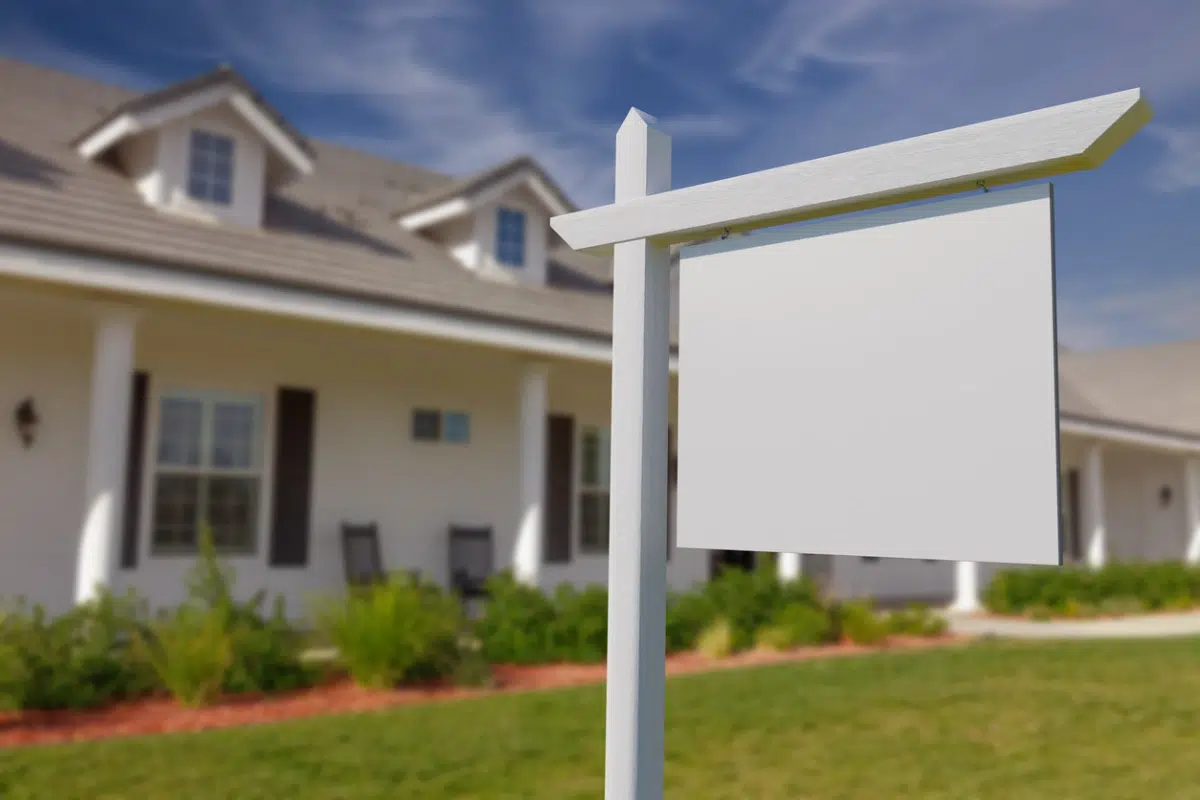
Property line issues can quietly become one of the most stressful experiences for homeowners. Whether a neighbor’s fence is extending across your property line or a structure is unintentionally built over a boundary, encroachment can affect your property rights. They can also impact your home value and peace of mind.
Fortunately, solving encroachment is possible with the support of Estavillo Law Group. Here’s everything you need to know about solving encroachment, including when it’s time to bring in a real estate litigation attorney from our firm.
Detecting Encroachment on Your Property
The first step to solving encroachment issues is identifying them in the first place. Signs of property encroachment can range from subtle to obvious:
- A neighbor’s property (i.e., shed or fence) crosses onto your lot
- Landscaping spills into your space
- Utility lines or drains are placed without your consent
To confirm that another’s property crosses your property line, you need to verify property boundaries. Wondering how to get a land survey for boundary disputes? Contact a licensed land surveyor. The survey will outline the exact boundary lines and identify the structures violating them. You can also use your deed, title insurance, or previous surveys.
Estavillo Law Group can cover the basic steps necessary for resolving property line disputes, such as identifying the parties involved, locating your neighbor’s property line, and determining the extent of the encroachment.
Legal Rights and Responsibilities of Property Owners
In California, property owners have the right to full use and enjoyment of their land. Even accidental encroachment issues can infringe on these rights. If your neighbor builds a structure that crosses the boundary, you may be able to hold them liable; however, intent matters in encroachment disputes.
Let’s look at a couple of different examples to showcase the complexity of encroachment cases.
Imagine your neighbor builds a fence along their backyard. While erecting the fence, they accidentally cross your property line on one side and move into someone else’s property on the other side of the lot. The fence only crosses onto the neighbor’s property by about an inch.
If you are able to resolve the case amicably, you may grant them an easement so they don’t have to move the fence. This is especially common if the fence barely moves past your neighbor’s land and you benefit from it (i.e., you wanted your yard fenced in, too).
In the first example, let’s say that the encroaching party builds an entire shed on your property. This type of property encroachment is much more egregious. Even if the incident was an honest mistake, the shed can drastically limit your ability to enjoy and use your property.
Another factor to consider is how long the property encroachment goes on. Imagine both you and your neighbor have relatively large lots, and you don’t notice that the shed is on your piece of real estate for several years. In this case, adverse possession may come into play.
Adverse possession refers to the open, hostile, and continuous use of someone else’s real estate for five years. In this scenario, the court may award the real estate in question to the encroaching party.
With that in mind, it’s vital to understand your ownership rights and property boundaries. You also need to take action against the encroaching party before adverse possession laws come into play.
Resolving Encroachment Amicably and Legally
Here are some suggestions on trying to resolve an encroachment issue amicably:
- Have a respectful conversation with your neighbor and give them the benefit of the doubt
- The encroaching party may be unaware of the mistake
- Share a copy of your survey showing the encroachment
- Discuss compromises, such as selling a small strip of your lot to the other party
When you can’t resolve encroachment issues amicably, you’ll need to resort to real estate litigation or mediation. A real estate attorney for encroachment in California can represent you and protect your property rights.
Mediation is a cost-effective, private option. While you should still talk to a real estate attorney, you can avoid many of the costs associated with taking the case to court. Encroachment cases can take months to resolve, so you should try to keep things amicable if possible.
If the property encroachment issues can’t be resolved through other means, Estavillo Law Group is here to help. Our team can seek injunctive relief, meaning the court orders the other party to remove their property from your land. Alternatively, we may seek monetary compensation or a quiet title action to establish ownership.
How Encroachment Affects Property Value and Liability
One of the potential consequences of property encroachment issues is that it could lower the value of your real estate. A potential buyer may be deterred by:
- Legal uncertainties over land ownership
- The possibility of an ongoing dispute
- The costs of dealing with encroachment
A potential buyer may not want to inherit a preexisting issue regarding property boundaries. That’s a lot to take on. With that in mind, you should handle property encroachment before attempting to sell your home. Doing so can help you obtain fair market value for your property and attract potential buyers.
The Role of Easements in Resolving Encroachment
An easement gives the other party the right to use part of your property. You still own the land, but your neighbor can use a small part of your property without concerns of encroachment disputes.
Let’s say your neighbor’s property is located behind your lot, and they have a private driveway to access their home. However, the entire driveway crosses one foot over your property line. In this case, you may want to grant them an easement.
Easements can be temporary or permanent. For instance, a temporary easement for a fence would end when the fence is taken down or moved. On the other hand, an easement for the driveway may be permanent. In this case, it would be recorded on the deed.
Reciprocal easements provide benefits to both parties. A shared driveway that you and your neighbor use to access your properties is an example of a reciprocal easement.
Choosing which type of easement to use is critical for avoiding future encroachment issues. Consult with our legal team to learn more about how to solve encroachment with easements.
Preparing to Sell: Disclosures and Pre-Sale Actions
If you are going to sell a home that is subject to an ongoing encroachment issue, you are legally required to disclose it to potential buyers. Failing to do so can result in lawsuits or other penalties. If you are honestly unaware of the encroachment onto your property, you may be safe from liability.
One of the best ways to avoid these headaches is to resolve these disputes before listing your home. If you are concerned about a possible encroachment, talk to our team of experienced attorneys.
When to Hire a Real Estate Attorney
The key to solving encroachment is knowing when to seek legal assistance. An experienced encroachment attorney from Estavillo Law Group can help you when dealing with encroachment or other disputes with your neighbor. You should consult our team if:
- The encroachment is significant or involves a structure
- The neighbor is uncooperative
- You’re unsure of your legal rights
- You need to resolve the matter to sell your home
- You’re considering options like easements or litigation
Estavillo Law Group provides encroachment resolution services in California to help with these and other issues. Our attorneys will work to resolve the matter as efficiently as possible. However, we will not hesitate to take your case to court if an agreement can’t be reached. Contact us today to schedule a consultation.
FAQs
What Is Property Encroachment?
Encroachment occurs when someone builds or extends a structure onto land they do not own. For instance, if you build a fence that crosses over onto your neighbor’s property, that’s encroachment.
Encroachment issues cover more than just fences. Anything that crosses the property line onto someone else’s property infringes on the property rights of the affected person.
Can You Force a Neighbor to Remove a Structure?
In many cases, yes. If your neighbor’s property crosses your property line, you may be able to pursue injunctive relief. If you win, the courts can order them to remove the encroaching structure from your property.
What Are the Legal Remedies for Encroachment?
Legal options include removing the structure, negotiating an easement, or seeking compensation from the neighbor. In some instances, you may be able to file a quiet title action, which stakes your claim to the land. If you win, no further action is needed.
Before taking the case before a judge, you may want to try to resolve encroachment issues through mediation. An experienced attorney can break down mediation vs. litigation for encroachment issues and help you choose the right type of legal action to enforce your ownership rights.
What’s the Difference Between Adverse Possession vs. Encroachment?
Adverse possession is a legal method of gaining ownership of land through continuous, hostile use for a minimum period. The statutorily required period varies by jurisdiction. Encroachment is the unpermitted use of another’s land without claiming ownership.


